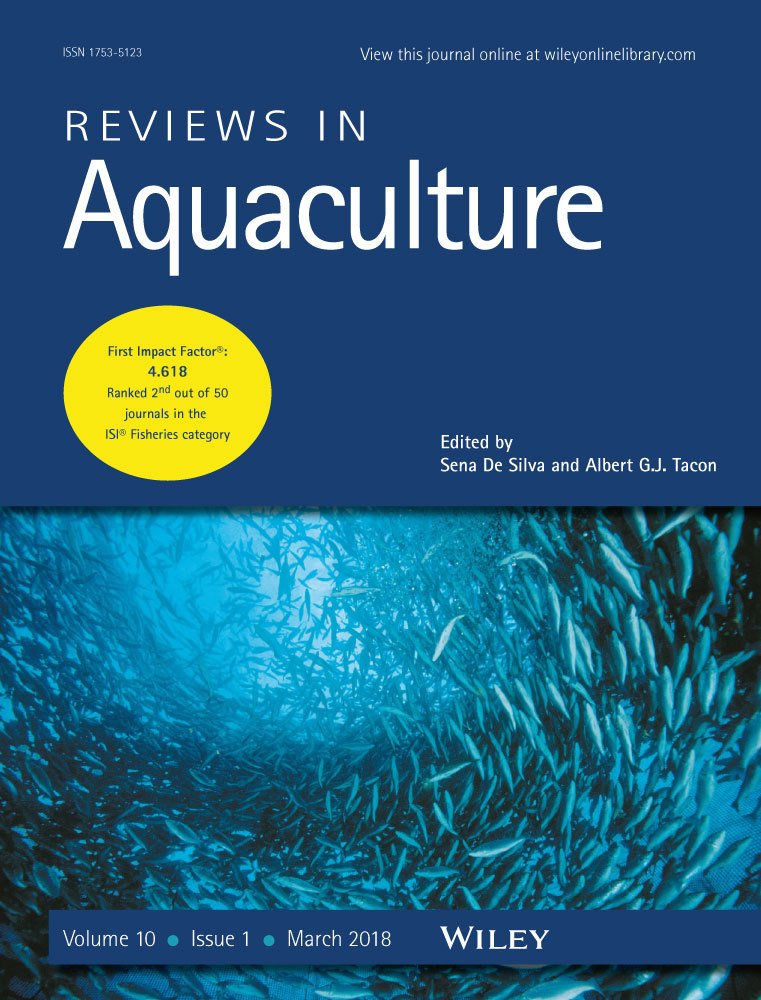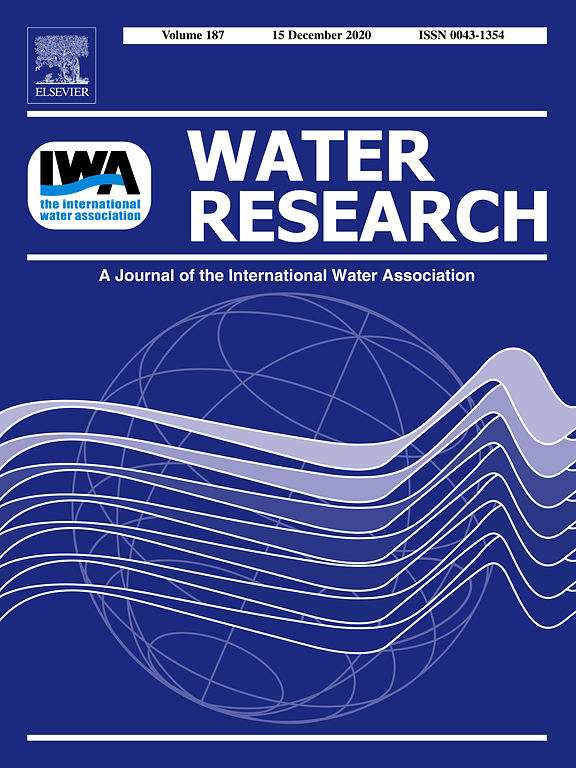Please find all scientific publications of IGB under > scientific publications
For more detailed information please refer to our > library catalogue
381 - 390 of 739 items
March 2024
Reviews in Aquaculture. - 16(2024)4, 1520-1543
Adaptation of cultured decapod crustaceans to changing salinities: Physiological responses, molecular mechanisms and disease implications
Yousuf Dar Jaffer; Irfan Ahmad Bhat; Ishfaq Nazir Mir; Raja Aadil Hussain Bhat; M. Junaid Sidiq; Prasanta Jana

March 2024
FEMS Microbiology Ecology. - 100(2024)4, Art. fiae036
Metabarcoding reveals ecologically distinct fungal assemblages in river and groundwater along an Austrian alpine to lowland gradient
Alice Retter; Christian Griebler; R. Henrik Nilsson; Johannes Haas; Steffen Birk; Eva Breyer; Federico Baltar; Clemens Karwautz

March 2024
Frontiers in Microbiology. - 6(2024), Art. 1363187
The contributions of Indigenous People's earth observations to water quality monitoring
Yolanda López-Maldonado; Janet Anstee; Merrie Beth Neely; Jérôme Marty; Diana Mastracci; Happyness Ngonyani; Igor Ogashawara; Anham Salyani; Kabindra Sharma; Neil C. Sims

March 2024
Nature Climate Change. - 14(2024)4, 320-321
The foraging behaviour of consumers leads to more extinctions when temperature increases (research briefing)
Benoit Gauzens; Gregor Kalinkat

March 2024
Drones. - 8(2024)3, Art. 115
Estimating Total Length of Partially Submerged Crocodylians from Drone Imagery
Clément Aubert; Gilles Le Moguédec; Alvaro Velasco; Xander Combrink; Jeffrey W. Lang; Phoebe Griffith; Gualberto Pacheco-Sierra; Etiam Pérez; Pierre Charruau; Francisco Villamarín; Igor J. Roberto; Boris Marioni; Joseph E. Colbert; Asghar Mobaraki; Allan R. Woodward; Ruchira Somaweera; Marisa Tellez; Matthew Brien; Matthew H. Shirley

March 2024
Nature. - 627(2024), 489
‘Global swimways’ on free-flowing rivers will protect key migratory fish species (correspondence)
Twan Stoffers; Catherine A. Sayer; Adela Baratech; Fengzhi He

March 2024
10 Must-Knows aus der Biodiversitätsforschung 2024
Thonicke, K., Rahner, E., Arneth, A., Bonn, A., Borchard, N., Chaudhary, A., Darbi, M., Dutta, T., Eberle, U., Eisenhauer, N., Farwig, N., Flocco, C. G., Freitag, J., Grobe, P., Grosch, R., Grossart, H. P., Grosse, A., Grützmacher, K., Hagemann, N., Hansjürgens, B., Hartman Scholz, A., Hassenrück, C., Häuser, C., Hickler, T., Hölker, F., Jacob, U., Jähnig, S., Jürgens, K., Kramer-Schadt, S., Kretsch, C., Krug, C., Lindner, J. P., Loft, L., Mann, C., Matzdorf, B., Mehring, M., Meier, R., Meusemann, K., Müller, D., Nieberg, M., Overmann, J., Peters, R. S., Pörtner, L., Pradhan, P., Prochnow, A., Rduch, V., Reyer, C., Roos, C., Scherber, C., Scheunemann, N., Schroer, S., Schuck, A., Sioen, G. B., Sommer, S., Sommerwerk, N., Tanneberger, F., Tockner, K., van der Voort, H., Veenstra, T., Verburg, P., Voss, M., Warner, B., Wende, W., Wesche, K. / Herausgeber: Potsdam-Institut für Klimafolgenforschung e. V. (PIK) Mitglied der Leibniz-Gemeinschaft

March 2024
Biodiversity and Conservation. - 33(2024), S. 1439–1458
Response of functional diversity of fish communities to habitat alterations in small lowland rivers
Fabrizio Stefani; Emanuele Fasola; Laura Marziali; Pietro Tirozzi; Alfredo Schiavon; Stefano Bocchi; Stefano Gomarasca

March 2024
Science of the Total Environment. - 924(2024), Art. 171621
Experimental warming promotes phytoplankton species sorting towards cyanobacterial blooms and leads to potential changes in ecosystem functioning
Geovani Arnhold Moresco; Juliana Déo Dias; Lucía Cabrera-Lamanna; Claudia Baladán; Mina Bizic; Luzia Cleide Rodrigues; Mariana Meerhoff
March 2024
Water Research. - 254(2024), Art. 121344
Community stability of free-living and particle-attached bacteria in a subtropical reservoir with salinity fluctuations over 3 years
Xue Yan; Shuzhen Li; Mamun Abdullah Al; Yuanyuan Mo; Jun Zuo; Hans-Peter Grossart; Hongteng Zhang; Yigang Yang; Erik Jeppesen; Jun Yang
The study explored changes in community stability of free-living (FL) and particle-attached (PA) bacteria in a shallow urban reservoir in subtropical China for 3 years. Salinity was the strongest environmental factor determining FL and PA bacteria communities whereby salinity increased the compositional stability, but decreased α-diversity.



